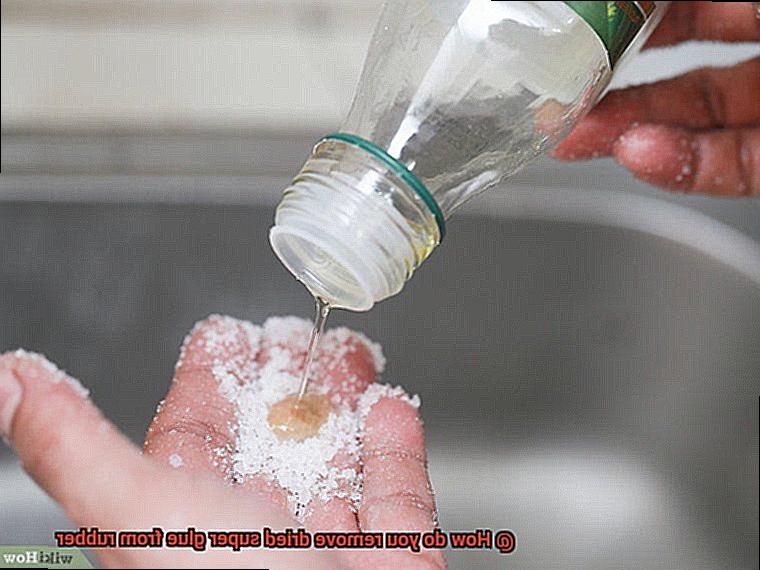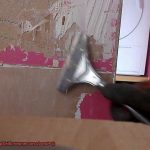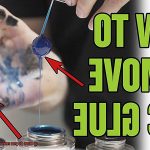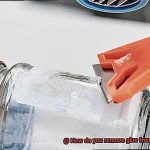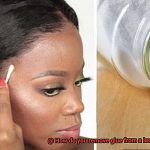The woes of accidentally unleashing a sticky super glue disaster onto our precious rubber treasures. But fret not, my friend. Dealing with dried super glue on rubber might seem like a daunting task, but fear not.
With the right know-how and a dash of determination, we can restore those rubber surfaces to their former glory. In this handy-dandy guide, we’ll walk you through the step-by-step process of vanquishing dried super glue from rubber.
Say goodbye to frustration and despair – it’s time to save your cherished rubber items from the clutches of stubborn adhesive.
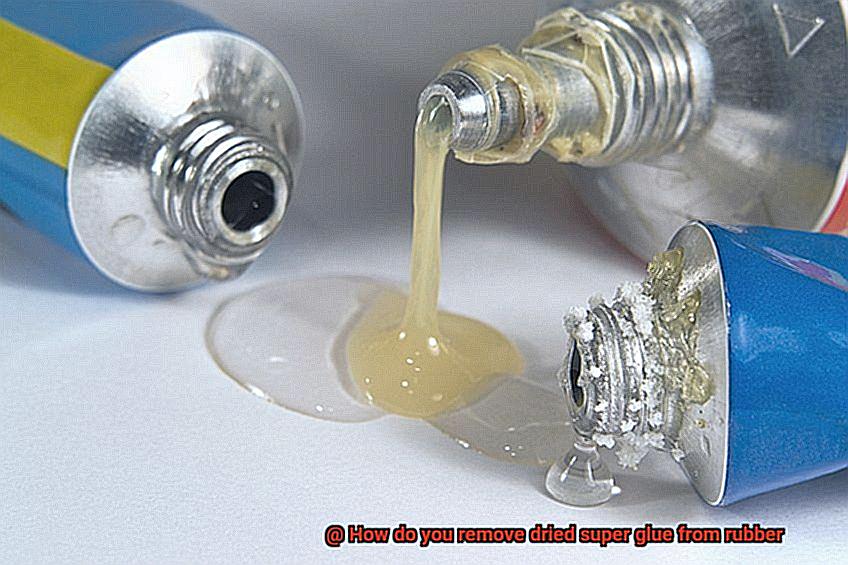
How do you remove dried super glue from rubber?
Contents
- 1 How do you remove dried super glue from rubber?
- 2 Method 1: Using Acetone to Remove Super Glue from Rubber
- 3 Method 2: Removing Super Glue with Warm Soapy Water
- 4 Method 3: Rubbing Alcohol or Isopropyl Alcohol for Super Glue Removal
- 5 Method 4: Freezing the Super Glue to Remove it from Rubber
- 6 Specialized Adhesive Removers for Super Glue Removal
- 7 Tips and Tricks for Removing Dried Super Glue from Rubber
- 8 Safety Precautions When Removing Dried Super Glue from Rubber
- 9 Conclusion
Instructions:
First things first, make sure your workspace is well-ventilated and don those protective gloves like a superhero ready for battle.
Grab a trusty cotton swab or soft cloth and douse it with some acetone or nail polish remover – these bad boys are your secret weapons against dried super glue.
Gently dab that potent potion onto the affected area, letting it seep into the glue for a few minutes. No need to go all Hulk on it; gentle dabbing will do just fine.
As the glue starts to surrender its grip, arm yourself with either a plastic scraper or your mighty fingernail (trimmed and clean, of course) to delicately scrape away the loosened adhesive. Remember, patience is key here – no need for reckless moves that could damage your beloved rubber.
If any remnants remain defiantly stuck, repeat steps 2 to 4 until that surface is squeaky clean again. For particularly stubborn spots, enlist the help of a toothbrush or soft-bristled brush in your quest for total removal domination.
Give that newly liberated rubber surface a wipe-down with a clean damp cloth to bid farewell to any lingering acetone residue.
Finally, make sure to dry the rubber thoroughly to avoid any potential damage. We don’t want any unexpected surprises ruining your hard-earned victory.
Tips and Tricks:
- Heat can be your ally in loosening super glue’s grip. If you can swing it, try using a hairdryer on low heat to warm up the glue before introducing acetone into the mix.
- Isopropyl alcohol is a worthy substitute for acetone if you find yourself without the latter.
- Remember, prevention is key. Next time you’re wielding that super glue, protect your rubber
Method 1: Using Acetone to Remove Super Glue from Rubber
Accidentally getting super glue on your rubber surfaces can be frustrating, but fear not. In this comprehensive guide, we will walk you through the process of using acetone to effectively remove super glue from rubber. Acetone is a powerful solvent that can break down the adhesive bonds of super glue, making it easier to remove. So let’s dive right in.
Step-by-Step Guide:
- Gather your materials: You will need acetone (which can be found in nail polish remover), a clean cloth or sponge, and gloves to protect your hands. Ensure that you are working in a well-ventilated area to prevent inhaling the fumes.
- Test an inconspicuous area: Before applying acetone to the entire surface, test it on a small and hidden area of the rubber to ensure it doesn’t cause any damage or discoloration.
- Soak the cloth or sponge: Pour some acetone onto the cloth or sponge until it is damp but not dripping.
- Dab and wait: Gently dab the acetone-soaked cloth onto the dried super glue. Allow the acetone to sit on the glue for a few minutes to soften it.
- Rub gently: After a few minutes, begin gently rubbing the area with the cloth or sponge in a circular motion. You should start to notice the super glue loosening and coming off.
- Repeat if necessary: If there are stubborn spots, repeat steps 4 and 5 until all the super glue is removed. If needed, you can also use a scraper or plastic card to carefully scrape off the glue, but be cautious not to damage the rubber surface.
- Clean up: Once all the super glue is gone, clean the area with warm soapy water to remove any residue from the acetone.
- Dry thoroughly: After cleaning, ensure that you dry the rubber surface completely before using it again.
Additional Tips and Alternatives:
- If acetone does not work or is not suitable for your rubber surface, you can try using warm soapy water, rubbing alcohol, or isopropyl alcohol as alternative solvents.
- Freezing the super glue can also help loosen its grip. Place ice cubes or a freezer pack on top of the dried glue for a few minutes, then chip it away with a plastic scraper or your fingernail.
- If all else fails, specialized adhesive removers designed for super glue are available in the market. Be sure to carefully follow the instructions provided.
Method 2: Removing Super Glue with Warm Soapy Water
Accidentally bonding rubber surfaces with super glue can be a sticky situation, but fear not. There is a simple and effective method to dissolve that unwanted adhesive bond using warm soapy water. This method is safe for most types of rubber, whether synthetic or natural. So, let’s dive into the step-by-step process and bid farewell to that pesky super glue.
First, gather all the necessary materials: warm water, mild dish soap, a soft cloth or sponge, and a bowl or basin large enough to soak the affected area.
Fill the bowl or basin with enough warm water to fully submerge the glued rubber item.
Add a few drops of mild dish soap to the water and gently mix until it creates a soapy solution. Avoid using harsh detergents or chemicals that could harm the rubber surface.
Carefully immerse the glued rubber item into the soapy water mixture, ensuring that the affected area is completely submerged.
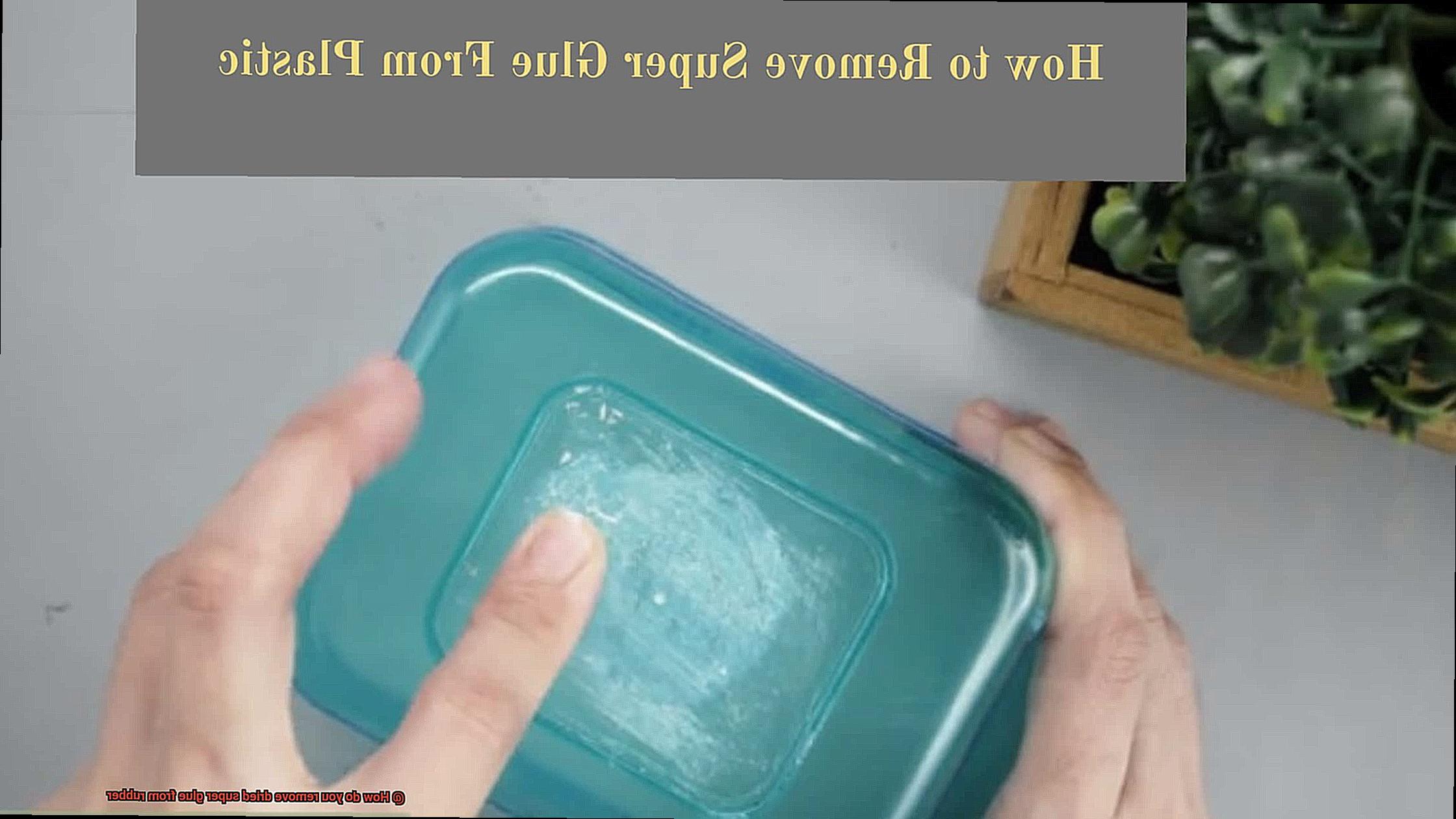
Allow the item to soak for at least 15-20 minutes. This gives the warm soapy water time to soften the super glue.
After the soaking period, delicately scrub the glued area using a soft cloth or sponge. Use circular motions and apply light pressure to loosen and remove the softened glue from the rubber surface. Be cautious not to scrub too vigorously as it may damage or scratch the rubber.
If any residue remains, you can employ a soft-bristled toothbrush to gently scrub it away.
Once all the glue has been eradicated, rinse the rubber item thoroughly under warm running water to eliminate any soap residue.
Finally, pat dry the rubber surface with a clean towel or allow it to air dry before using or storing it again.
Method 3: Rubbing Alcohol or Isopropyl Alcohol for Super Glue Removal
Super glue can be a lifesaver when it comes to fixing things, but it can also be a nightmare when it accidentally ends up on your rubber surfaces. Don’t worry, though. In this article, we’ll guide you through the process of using rubbing alcohol or isopropyl alcohol to remove super glue from rubber surfaces effectively.
Step 1: Test a Small Area
Before diving into the process, it’s essential to test the rubbing alcohol on a small, inconspicuous area of the rubber surface. This step ensures that the alcohol doesn’t cause any damage or discoloration. Remember, prevention is key.
Step 2: Soak a Cotton Ball or Cloth
Now that you’ve tested the rubbing alcohol, it’s time to get down to business. Grab a cotton ball or cloth and soak it in rubbing alcohol or isopropyl alcohol. Ensure that it is well-saturated but not dripping.
Step 3: Apply and Wait
Place the soaked cotton ball or cloth on the affected area and let it sit for a few minutes. This allows the alcohol to penetrate and loosen the super glue. Take a deep breath and let science do its magic.
Step 4: Gentle Scrubbing
After patiently waiting, it’s time to gently scrub away the unwanted super glue. Use circular motions with the cotton ball or cloth, applying slight pressure to help remove the softened glue. Imagine yourself erasing those sticky traces from existence.
Step 5: Repeat if Necessary
Sometimes, super glue can be stubborn. If all of it isn’t removed in one go, don’t panic. Repeat steps 3 and 4 until you’ve successfully eliminated all traces of glue from the rubber surface. Persistence pays off.
Step 6: Clean Up
Congratulations, you’ve successfully banished the super glue. But before you celebrate, don’t forget to clean the rubber surface with soap and water. This final step ensures that any residue left behind by the rubbing alcohol is washed away. Now your rubber surfaces can shine like new.
Important Considerations:
- Avoid using rubbing alcohol on certain types of rubber, such as latex or rubber with a painted or coated finish, as it may cause damage. Remember, not all rubbers are created equal.
- If rubbing alcohol is unavailable, acetone can be used as an alternative solvent for removing super glue from rubber surfaces. However, exercise caution and ensure proper ventilation when using acetone. Safety first.
Method 4: Freezing the Super Glue to Remove it from Rubber
Method 4: Freezing the Super Glue to Remove it from Rubber
Have you ever found yourself in a sticky situation with super glue on a rubber surface? Don’t panic, because we have a chilling solution for you – literally. Freezing the super glue is a highly effective method to remove it from rubber surfaces. So, gather your ice cubes, freezer, or canned compressed air, and embark on this frosty adventure.
Step 1: Ice Cube Method
Using ice cubes is a simple yet effective way to freeze the super glue. Place the ice cubes directly on the dried glue and let them sit for a few minutes. The icy coldness will cause the super glue to harden and lose its stickiness.
Step 2: Gentle Scrape
Once the super glue is frozen, delicately scrape it off using a plastic scraper or even your trusty fingernail. Take care not to damage the rubber surface while scraping away the hardened glue.
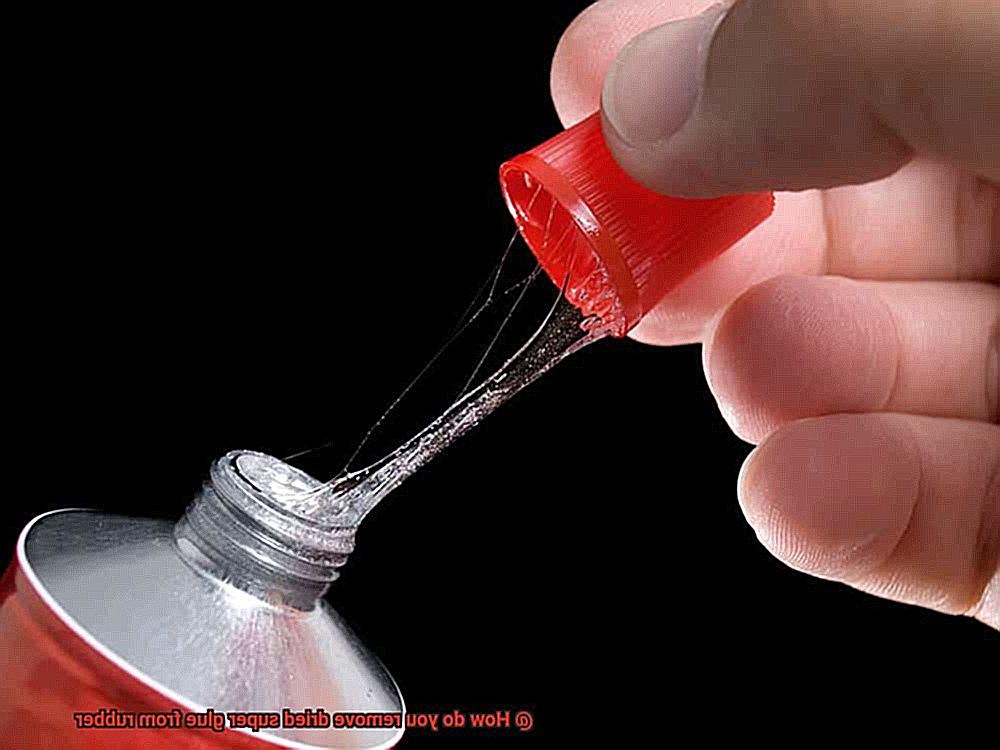
Step 3: Freezer Method
If you prefer using your freezer, seal the rubber item with the dried super glue inside a plastic bag. Leave it in the freezer for a few hours or overnight. The sub-zero temperatures will freeze the super glue, making it much easier to remove.
Step 4: Thaw Slightly
After taking out the item from the freezer, allow it to thaw slightly before attempting to scrape off the frozen super glue. This will prevent any potential damage to the rubber surface while removing the glue.
Step 5: Compressed Air Method
For those fortunate enough to have a can of compressed air at their disposal, turn it upside down and spray the freezing liquid onto the super glue. The extreme cold temperature of the liquid will freeze the glue, making it easier to remove.
Step 6: Scraping Again
Once the super glue is frozen, gently scrape it off using a plastic scraper or your fingernail. Keep in mind that thicker or stubborn layers may require multiple rounds of freezing and scraping.
Specialized Adhesive Removers for Super Glue Removal
I have the perfect solution for you. Let’s delve into the world of specialized adhesive removers that are specifically designed to tackle the stubbornness of super glue on rubber. No matter the intensity of the bond or the delicacy of your rubber surface, there is a remover out there tailored just for you.
One tried-and-true option for super glue removal is acetone. This potent solvent has the power to dissolve super glue effectively. However, exercise caution, as it may also damage certain types of rubber. Always perform a spot test before applying it to the entire surface.
If you prefer a commercial solution, fear not, for there are an abundance of specialized super glue removers available. These products are formulated to remove super glue without causing any harm to your precious rubber. They come in gel or liquid form, making them effortlessly applicable and highly effective against the sticky situation at hand. Just follow the manufacturer’s instructions for optimal results.
For less stubborn glue stains, rubbing alcohol can come to your rescue. It serves as a milder option compared to acetone and can be safer for specific types of rubber. Simply apply a small amount to a cloth or cotton swab and gently rub the glued area until the adhesive starts to dissolve.
Now, if you’re seeking a gentler approach, look no further than oil-based substances like vegetable oil or olive oil. Generously apply these oils to the affected area and allow them to sit for a few minutes. Then, with utmost care, gently rub the area using a cloth or sponge. The oil works its magic by loosening the adhesive bond, making it easier to bid farewell to that pesky dried super glue.
Remember, when it comes to removing dried super glue from rubber surfaces, patience and gentle rubbing are key. Rushing or using excessive force may result in damage. After successfully removing the glue, be sure to clean the area with mild soap and water to eliminate any residue from the adhesive remover.
Tips and Tricks for Removing Dried Super Glue from Rubber
We’ve all been there – a small mishap with super glue and now you’re left with dried glue on your beloved rubber item. Don’t worry, because we’ve got you covered. In this article, we’ll share some tips and tricks to help you remove dried super glue from rubber surfaces. Let’s dive in.
The Power of Acetone:
Acetone is a superhero when it comes to removing dried super glue from rubber. Soak a cloth or cotton ball in acetone and gently rub the affected area. The glue will start to break down, making it easier to remove. Remember to wear gloves and work in a well-ventilated area for safety.
Nail Polish Remover as a Substitute:
If you don’t have acetone, nail polish remover can be your go-to alternative. Most nail polish removers contain acetone, which works in the same way to dissolve super glue. Apply a small amount of nail polish remover to a cloth or cotton ball and gently rub the glue until it starts to loosen. Always test on a small area first.
Gentle Warm Soapy Water:
For delicate rubber surfaces like toys or fabrics, warm soapy water is a safer option. Fill a basin with warm water, add a few drops of dish soap, and soak the affected item for a few minutes. Use a soft brush or sponge to gently scrub away the dried glue. Rinse thoroughly and let it dry naturally.
Rubbing Alcohol – A Handy Solution:
Rubbing alcohol is another effective ally against dried super glue. Moisten a cloth or cotton ball with rubbing alcohol and gently rub the glue until it dissolves. You may need to repeat this process for stubborn stains. Rinse with water and dry the surface completely.
Petroleum Jelly – A Gentle Approach:
For those who prefer a chemical-free method, petroleum jelly is the answer. Apply a generous amount of petroleum jelly to the glue and let it sit for a few hours or overnight. The jelly will soften the glue, making it easier to peel off. Gently scrape the glue away with a plastic scraper or your fingernail and clean with warm soapy water.
Sandpaper – The Last Resort:
If all else fails, you can try using fine-grit sandpaper or an emery board. Gently sand the dried super glue in a circular motion. Be careful not to apply too much pressure to avoid damaging the rubber. Clean the area with warm soapy water to remove any remaining particles and restore the rubber’s appearance.
Safety Precautions When Removing Dried Super Glue from Rubber
Imagine the sinking feeling when you accidentally spill super glue on your favorite rubber item. But fear not. With the right safety precautions, you can remove dried super glue from rubber without harming yourself or the surface. Let’s explore the essential steps to ensure a safe and successful removal process.
Work in a well-ventilated area:
Prioritize your safety by working in a well-ventilated space. Open windows or use fans to improve air circulation. This helps prevent inhalation of any fumes that may be released during the removal process, ensuring a healthy environment.
Protect yourself:
Guard yourself against potential harm by wearing protective gloves, preferably nitrile ones, to shield your hands from direct contact with the glue and any chemicals used. Additionally, don eye protection such as safety goggles or glasses to safeguard your eyes from splashes or debris.
Follow instructions:
If you choose to use chemicals or solvents for removal, read and adhere to the manufacturer’s instructions meticulously. Some solvents can be flammable or toxic, so handle them with utmost caution to avoid any accidents.
Keep children and pets away:
Ensure the safety of your loved ones by keeping children and pets at a safe distance from your work area. This prevents accidental exposure to harmful chemicals or sharp tools, creating a secure environment for everyone involved.
Gentle techniques:
Exercise patience and avoid using excessive force or sharp objects that may damage the rubber surface. Instead, opt for gentle and patient techniques for effective and safe removal. Remember, a delicate touch goes a long way.
Monitor your body’s response:
Your well-being is paramount during the removal process. If you experience skin irritation or difficulty breathing while removing dried super glue, stop immediately and seek medical attention if necessary. Your health should never be compromised.
Dispose of waste properly:
Take responsibility for the environment by disposing of any waste materials appropriately. This includes used gloves, rags, or containers that have come into contact with the super glue or chemicals used. Follow local regulations for hazardous waste disposal if applicable, ensuring a clean and eco-friendly conclusion.
4mOgi0_cQCw” >
Also Read: How do you remove super glue residue from rubber?
Conclusion
Removing dried super glue from rubber can be a tricky task, but fear not.
There are effective methods that can come to your rescue. One option is to use acetone, a powerful solvent that can dissolve the glue.
Simply soak a cloth in acetone and gently rub it on the affected area. Another alternative is using nail polish remover, which contains acetone as well.
Apply it to a cotton ball and dab it onto the glue until it starts to loosen. If you prefer a more natural approach, try using olive oil or coconut oil.
These oils have adhesive-dissolving properties and can help break down the super glue. Just apply a generous amount onto the glue and let it sit for a few minutes before wiping it away with a cloth.
Remember to always test these solutions on a small, inconspicuous area of the rubber first to ensure they don’t cause any damage.

